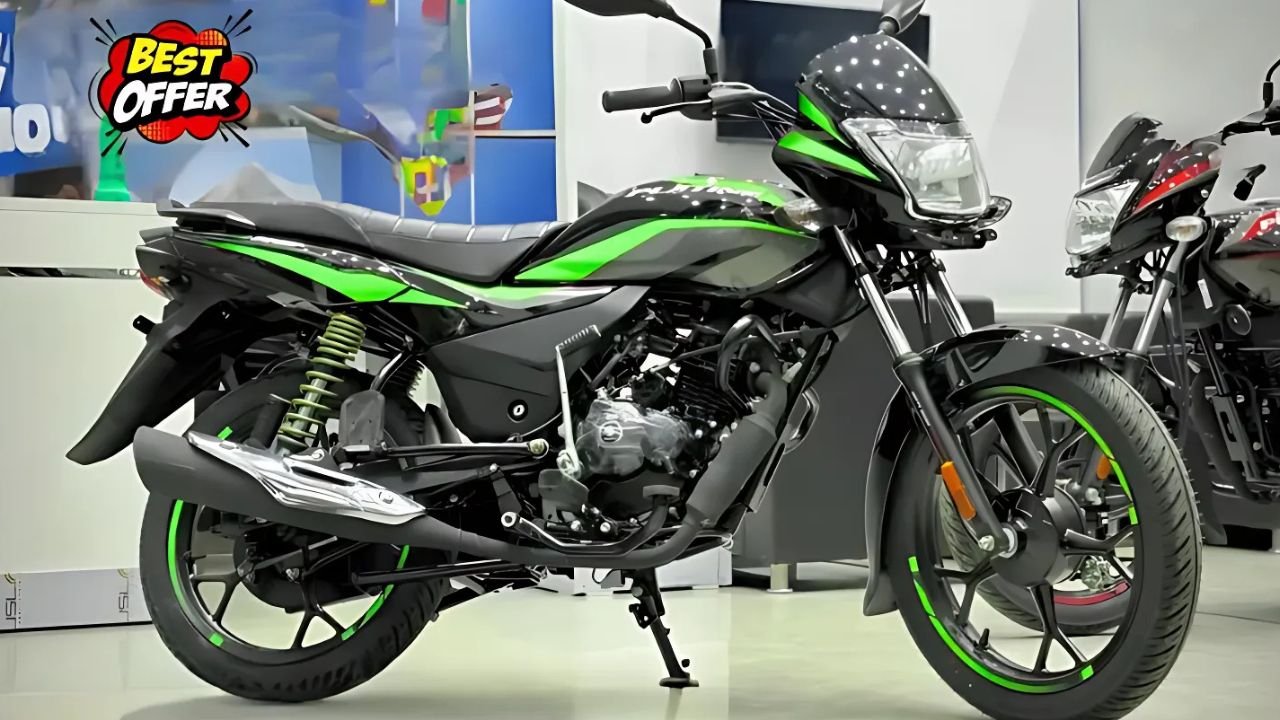2025 Bajaj Platina CNG: When it comes to commuter motorcycles in India, the Bajaj Platina has always been a favorite. Known for its incredible fuel efficiency, affordability, and low running costs, it’s a bike that millions rely on for daily rides. But now, in 2025, Bajaj has done something truly bold—they’ve launched the Platina CNG, the country’s first mainstream motorcycle to run on compressed natural gas.
30 km/pl Mileage with Premium features: New Renault Duster 2025 Launched
Honestly, this move could be revolutionary. At a time when fuel prices are unpredictable and riders are constantly looking for cheaper, cleaner alternatives, Bajaj seems to have hit the sweet spot. Let’s take a closer look at what makes the 2025 Platina CNG such a big deal.
Why a CNG Bike, and Why Now?
For years, we’ve seen CNG cars become popular in India. They’re cheaper to run, cleaner for the environment, and widely used in cities with decent infrastructure. But in the two-wheeler space, nobody really tried it at scale—until now.
Bajaj introducing CNG to the Platina makes perfect sense. The bike is already seen as the ultimate fuel saver. Add CNG into the mix, and you’re talking about running costs that are almost unbelievably low. To be fair, availability of CNG stations is still mostly in urban areas, but for city commuters, this could be a game-changer.
Design: Familiar Yet Functional
From the outside, the Platina CNG doesn’t look radically different from the regular petrol version. And that’s intentional. Bajaj has kept the design simple and familiar, so long-time Platina buyers won’t feel alienated.
You still get the slim commuter profile, alloy wheels, comfortable seat, and a practical riding position. The big difference lies under the skin—the integration of the CNG cylinder. It’s compact and neatly fitted, designed in a way that doesn’t interfere too much with the bike’s proportions or balance.
Sure, you lose a bit of under-seat storage, but that’s a small trade-off for the kind of savings this bike promises.
Engine and Performance
The Platina CNG uses a 100cc single-cylinder engine that has been adapted to run on both petrol and CNG. Riders can easily switch between fuels with a toggle, just like in CNG cars.
On petrol, performance is pretty much what you’d expect from a commuter—smooth, efficient, and enough for daily traffic. On CNG, the power drops slightly, but honestly, it’s still adequate for city rides, short commutes, and even rural use.
The engine produces around 7.5–8 PS of power and 8 Nm of torque. Top speed hovers around 80 km/h, but let’s be real—this isn’t a bike built for speed. It’s built for savings. And in that department, it shines.
Mileage: The Real Star
Here’s the big selling point. The 2025 Bajaj Platina CNG delivers an outstanding mileage of around 70–75 km/kg of CNG. Considering the price of CNG is significantly lower than petrol, the running cost per kilometer is almost half.
Even on petrol, the bike continues to offer an impressive 65–70 km/l, making it one of the most economical motorcycles in India. For daily commuters who rack up hundreds of kilometers each week, the savings could be huge.
On the flip side, if you live in an area without easy CNG access, you might not benefit as much. But since it’s a dual-fuel bike, you always have petrol as a backup.
Ride and Comfort
One of the reasons the Platina has always been popular is its comfort. Bajaj claims the Platina CNG continues with the same spring-in-spring suspension setup, which means it can handle potholes and rough roads with ease.
The seat is wide and well-padded, making it comfortable for both rider and pillion. Combined with its upright posture and light weight, it’s easy to handle even in heavy city traffic. Honestly, if comfort is your top priority in a commuter bike, the Platina has always been a safe bet—and this CNG version is no different.
Safety and Features
Safety is basic but adequate. The Platina CNG comes with drum brakes at both ends with CBS (combined braking system) as standard. Higher trims may get a front disc brake. The tyres are tubeless, which is always a plus for daily riders.
As for features, you get a simple analogue instrument cluster with fuel indicators for both petrol and CNG, along with the usual speedometer and odometer. Nothing fancy, but then again, this bike is all about practicality.
Price and Competition
The 2025 Bajaj Platina CNG is expected to be priced around ₹80,000–₹85,000 (ex-showroom). That makes it slightly more expensive than the standard Platina petrol, but the extra cost is easily offset by the savings in running costs.
In terms of rivals, it competes with budget commuters like the Hero Splendor+, TVS Sport, and Honda Shine 100. But none of them offer the unique CNG advantage. That gives Bajaj a serious edge.
Final Thoughts: A Clever Move by Bajaj
So, is the 2025 Bajaj Platina CNG worth the hype? Honestly, yes. It takes an already trusted, fuel-efficient commuter and makes it even more affordable to run. It’s eco-friendly, wallet-friendly, and built with the needs of everyday riders in mind.
To be fair, it won’t suit everyone—especially those in areas without reliable CNG infrastructure. But for city commuters in metros and towns where CNG is common, this bike could be a game-changer.
At the end of the day, the Platina CNG proves that innovation doesn’t always mean adding fancy features or chasing high performance. Sometimes, it’s about making something practical even more practical. And Bajaj has done just that.
In 2025, as fuel costs continue to pinch pockets, the Platina CNG arrives as a breath of fresh air—quietly efficient, smartly economical, and still very much the everyday companion millions of riders need.
